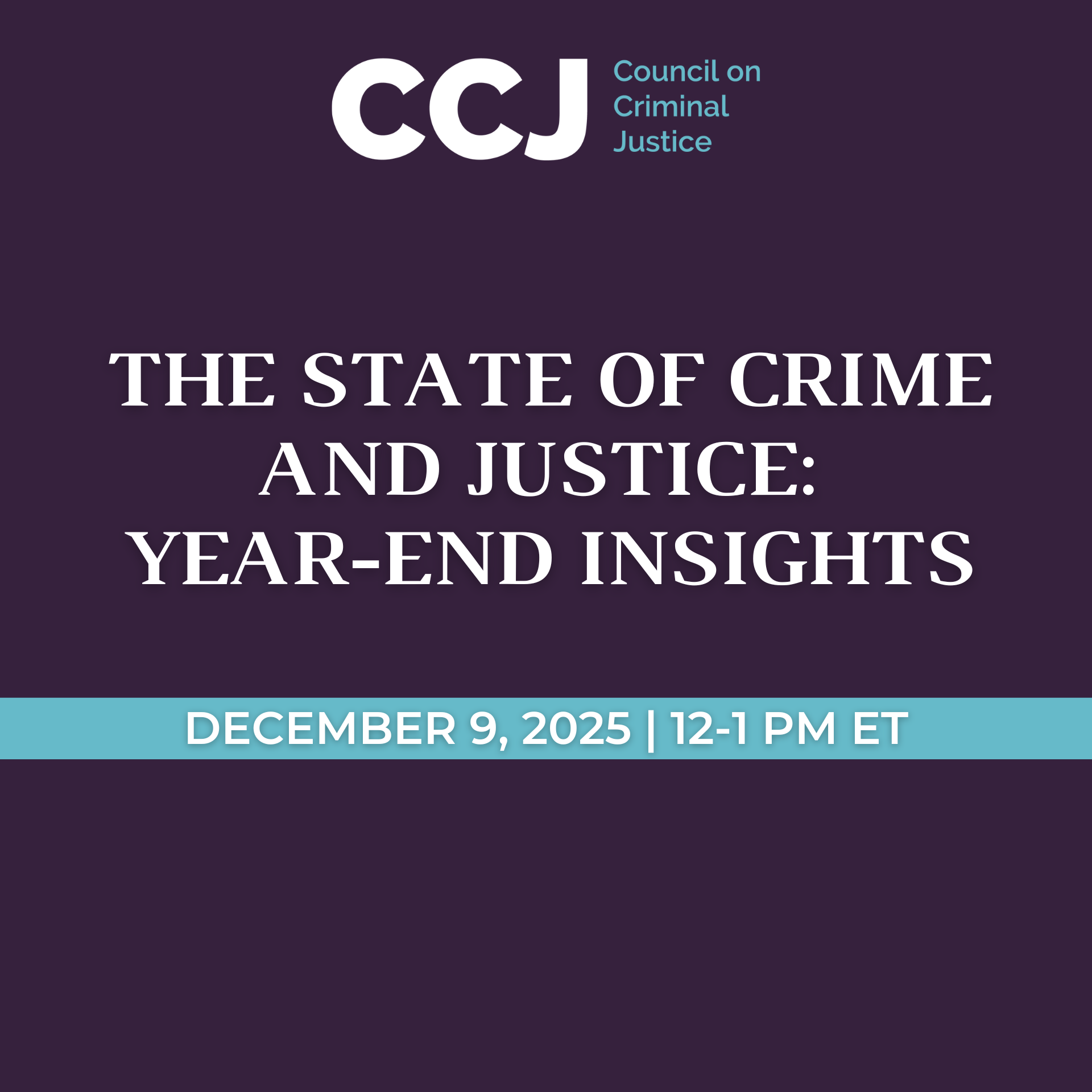New Analysis of 2023 Crime Trends Also Documents a Continuing Surge in Motor Vehicle Theft, With Incidents Doubling Since 2019
EMBARGOED FOR RELEASE
5:00 a.m. ET, January 25, 2024
Contact: Jenifer Warren
jwarren@counciloncj.org
916-217-0780
WASHINGTON, D.C. – New year-end data shows that homicide and most other violent crime declined in American cities in 2023, but levels remain above those seen before the onset of the COVID pandemic and the widespread social justice protests of 2020, according to a study of a dozen crime trends in 38 cities released today by the Council on Criminal Justice.
The analysis found that the number of homicides in 2023 fell by 10% compared to 2022, representing 515 fewer murders in the 32 cities that made year-end homicide data available. If that decrease holds once a larger number of jurisdictions report 2023 data to the FBI later this year, it would be among the biggest single-year homicide drops since at least 1960, the start of modern record keeping. Still, CCJ’s analysis shows that murder counts remained 18% higher last year than in 2019.
In contrast to the reduction in homicides, motor vehicle theft continued to spike last year. Across the 34 cities with available data, the motor vehicle theft rate increased by 29%, representing an additional 56,843 incidents. Since 2019, motor vehicle theft has shot upward by 105%, reversing a decades-long decline. In addition to its direct impact on victims, motor vehicle theft is a concern because stolen vehicles are often used to commit other crimes, such as robberies and drive-by shootings. To further illuminate the trend, the Council today also released this new motor vehicle theft fact sheet.
In other findings, reported incidents of shoplifting, a crime that drew considerable attention from lawmakers and the media in 2023, jumped 22% from 2022 levels, representing 14,743 additional incidents in the study cities. Drug offenses (+4%), robberies (+2%) and domestic violence incidents (+2%) also ticked upward in 2023, while gun assaults (-7%), nonresidential burglaries (-7%), carjackings (-5%), larcenies (-4%), residential burglaries (-3%), and aggravated assaults (-3%) fell.
“The drop in homicide and other violent crime most cities are experiencing is heartening, but the decrease varies significantly from place to place, and it’s certainly not time to declare mission accomplished,” said CCJ Research Specialist Ernesto Lopez, the study’s co-author. “Murder counts remain unacceptably high. Leaders should redouble their efforts to zero in on what’s driving violence in their communities and deploy interventions with a track record of success.”
In addition to changes from 2022, the analysis provides comparisons with crime levels recorded before the onset of the coronavirus pandemic and the police killing of George Floyd, which sparked nationwide demonstrations. Like homicide, most other violent offenses remained elevated in 2023 compared to 2019. Carjacking jumped by 93% in the study cities from 2019 to 2023, and gun assault (+32%), aggravated assault (+8%), and robbery (+1%) also remained higher last year than in 2019.
Property crime trends are more mixed. There were fewer reported residential burglaries (-26%) and larcenies (-7%) in 2023 than in 2019, but more nonresidential burglaries (+3%). Reported shoplifting incidents were 2% lower last year compared to 2019. Arrests for drug crimes were 27% lower.
“Big social and economic forces appear to have been behind the sharp trends that began in 2020, but now there is considerable variation between cities and crime types that suggests local factors are becoming more significant,” CCJ President and CEO Adam Gelb said. “City, state, and federal officials and communities have implemented a wide array of crime prevention strategies over the past few years. It’s time now for leaders to compare what’s happening in their communities with the broader trends and critically examine what may or may not be paying off.”
In assessing the rise and subsequent fall of homicide rates over the past four years, the report’s authors said that identifying precise national-level explanations is challenging. “Pandemic-related changes in people’s daily activities and emotional and economic stress levels, changes in police practices and a rupture of public trust in law enforcement, and the suspension or reduction of social supports and programs are among the theories offered by crime scholars,” they said.
The authors also noted that more detailed analyses of crime trends and crime types, such as homicide, motor vehicle theft, and shoplifting, can be found in reports for CCJ’s Crime Trends Working Group, which is investigating crime patterns and exploring ways to improve the nation’s crime data infrastructure. In addition, effective strategies for violence reduction in the U.S. have been identified and highlighted by CCJ’s Violent Crime Working Group, which served as the foundation of the Violent Crime Reduction Roadmap published in December 2023 by the Department of Justice’s Office of Justice Programs.
Support for the Crime Trends Working Group and this analysis was provided by the Annie E. Casey Foundation, Arnold Ventures, the Harry Frank Guggenheim Foundation, Southern Company Foundation, and Stand Together Trust, as well as the John D. and Catherine T. MacArthur Foundation and other CCJ general operating contributors.
About the Report and Data
Co-authored by Lopez and Doctoral Candidate Bobby Boxerman, the new analysis updates a series of earlier reports with new data through December 2023. It examined crime rates for 12 violent, property, and drug offenses in 38 U.S. cities, including Washington, D.C., Los Angeles, Detroit, Seattle, Philadelphia, Chicago, and Atlanta. The smallest city in the sample was Syracuse, with 142,000 residents; the largest was New York, with more than 8.4 million residents. The 38 cities are not necessarily representative of all cities in the U.S., and not all cities reported data for each offense.
The data for this report were obtained within days of the end of the study period in order to provide a timely snapshot of crime across the nation. As a result, these figures may and likely will differ from data subsequently published by individual police departments. For the most up-to-date information for a specific city, please visit its website.
About the Council on Criminal Justice
The Council on Criminal Justice (CCJ) is a nonpartisan invitational membership organization and think tank that advances understanding of the criminal justice policy challenges facing the nation and builds consensus for solutions based on facts, evidence, and fundamental principles of justice.



